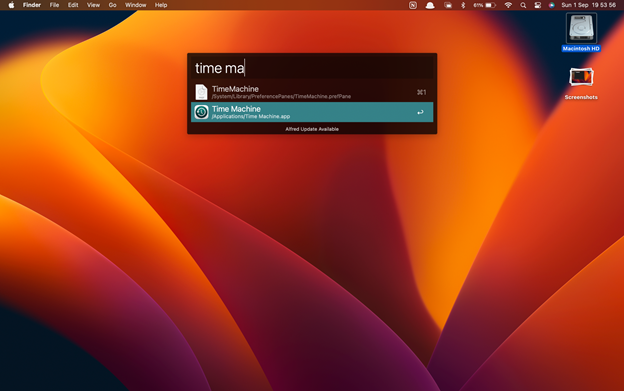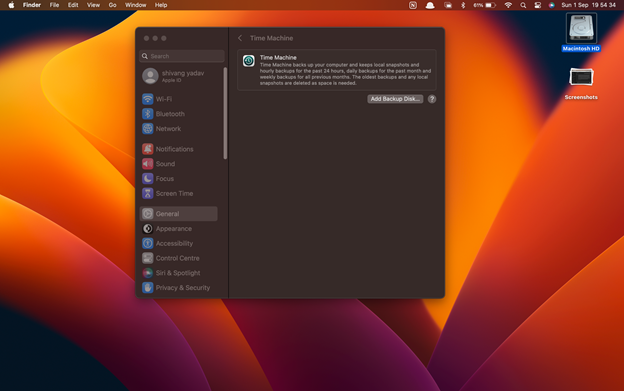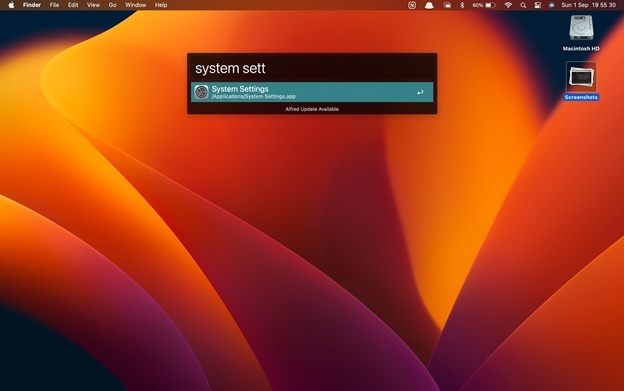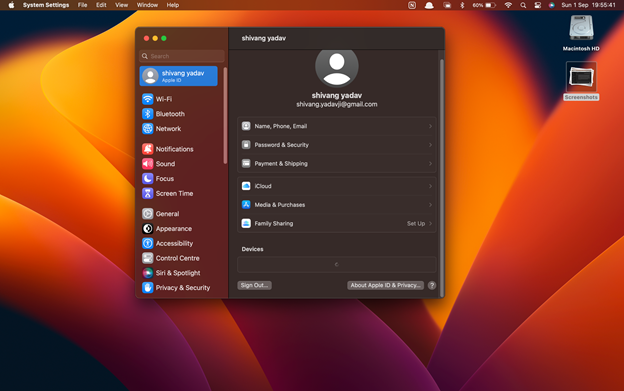
- MacOS - Home
- Mac - Factory Reset
- Mac - Erase Assistant Not Supported
- Mac - Update macOS
- Mac - iMessage not working on Mac
- Mac - Rename a Screenshot
- Mac - Password Protect Folder
- Mac - Turn Off Sleep Mode
- Mac - Migration Assistant not Working
- Mac - Remove Background from Images
- Mac - Scan QR Codes
- Mac - Change Folder Color
- Mac - Alternatives to Notepad++
- Mac - Fix Screen Lines
- Mac - Update Roblox
- Mac - Recover Deleted Files
- Mac - Convert HEIC to JPG
- Mac - Take Screenshots
- Mac - PDFs to Word Docs
- Mac - Open & Use Emoji Keyboard
- Mac - ~/Library Folder
- Mac - Uninstalling Programs
- Fix 'MacBook Keyboard Not Working' Issue
- Fix If Touch Bar Not Working
- Mac - Check Storage
- Convert Screenshot to PDF
- Mac - Fix MacBook Pro Trackpad Not Working
- Fix Your Account has been Disabled in App Store and iTunes
- iPhone - Delete Wallpaper
- Mac - Show ~/Library Folder
- iPhone: How To & User Guide
- iPhone - Configure Proxy
- iPhone - Factory Reset
- iPhone - Fix Charging Issue
- iPhone - How To Backup
- iPhone - Retrieve Deleted Messages
- iPhone - Clear Cookies & Cache
- iPad: How To & Guides
- iPad - Free Up Storage
How to Factory Reset MacBook?
MacBooks are one of the most trusted devices around the world. For all purposes of tasks from personal to professional it has found its usage. Over time, its become more like a digital companion, holding all your photos, work files, and personal projects. But, with time as the MacBook ages, things just aren't running as smoothly as they used to. If your MacBook is lagging, or maybe you're planning to sell it, and want to ensure all your personal data is wiped clean. Here is when you need to factory reset the MacBook.
Factory resetting your MacBook is essential to make sure your device works perfectly fine. But before you dive into the process of resetting your device, you need to make sure you know all the how-to's and issues that can be possible. Also, knowing the correct way to ensure that your data is safe with you and if any issue happens, your device can be retrieved.
When You Need to Reset Your MacBook?
- May it be a MacBook Pro, Macbook Air, or any other model of the device. With time, these devices start getting laggy as they can accumulate unnecessary files, outdated software, and even malware, which can slow them down. These need the software to be reset. Here are some common scenarios where a factory reset might be the best course of action:
- While selling or trading the device, avoid leakage of personal data.
- Cleaning up devices for improving performance or fixing unfixable issues.
Factory resetting your MacBook device will erase everything, including your files, apps, settings, etc. Not performing this task properly might lead to issues and leakage of data. Also, you need to have a backup of your data and sign out all accounts from the MacBook to avoid any issues in the process.
Things to be Done Before Factory Reset MacBook
The MacBook device that we are factory resetting needs some preparations prior to performing the task. These preparations ensure that there is a smooth reset process and the data you require is not lost in the process.
1. Backup your MacBook's Data
All-important data like documents, photos, and applications that you will need after the reset process. For this, you can either use Time Machine or iCloud.
2. Backup MacBook Data using Time Machine
Time Machine is a macOS utility application that creates backups of your data. You can store this backup on an external drive or on your internal drive too.
Steps to create a backup using time machine in MacBook −
- Connect an external hard disk to your MacBook.
- Hit command + space; the spotlight box appears.
- Type "time machine" and hit enter.
- Click on use as a backup disk, then follow the set of instructions provided.


This will backup the data of your MacBook as on the given time frame to the external drive.
3. Backup MacBook data using iCloud storage
If you don't have an external hard drive to back up your data. Here is an alternate way to create a backup of your MacBook using iCloud storage.
- Press command + space and open the spotlight on your MacBook.
- Type system settings in this window. Click on ‘apple id’ > iCloud.
- Select the app for backup on iCloud using iCloud menu.


Now, you have completed the backup of your MacBook.
4. Sign Out Apple Accounts
Prior to resetting your macbook it is a good practice to sign out all the accounts that are logged in. In case you are going to sell your macbook, it adds extra safety.
- Go to system preferences > apple id.
- Scroll down and click on sign out.
Next process is starting the factory reset process. This involves resetting NVRAM and then factory resetting data of the macbook.
5. Reset NVRAM in macbook
NVRAM (Non-volatile Random Access Memory) stores zone data, volume preference, etc. This will minimize crashing during the reset process. To reset NVRAM follow these steps,
- Turn Off your macBook
- While restarting it. Hold option + command + R + P for 20 seconds.
- Let it restart as normal this will erase the NVRAM.
How to Factory Reset MacBook?
Now, you are ready for the actual reset process. Following these steps will factory reset your MacBook −
- Shut Down your macbook
- While restarting it, hold command + R till the apple icon appears. It might need an admin username and password.
- In the window that appears, select MacOS utilities > Disk Utility > continue.
- Select, Macintosh HD > erase
- In the box type name as "Macintosh HD" and choose format as APFS.
- Click finished when done.
- Quit the disk utility, this will take you back to macOS utility screen
- Here, click on Reinstall macOS, click on continue to install your new macOs. Restart your macBook and assure everything works fine.
- If the disk utility window does not appear, restart your macbook again using command + R.
After factory resetting your MacBook, it will run smoothly as good as new. Also, if there were any malware in the system, they would also be removed. As we have done the backup of the MacBook, if there were any malware in the system, they would also be removed. Aapps and logins will be restored.